It may seem facetious to say that the greatest skill a sailor can exhibit is balance. It seems self-evident, as we are enjoined to "stay on the boat", naturally, as the boat, unless in the process of burning or exploding, is inherently safer than off the boat, in the water or (better) in the liftraft or the helicopter harness.
Most sailors try to avoid such situations, and yet, we are seeing on a regular basis of late the consequences of insufficient preparation for a life at sea in a small boat every year. One might say that the balance of having sufficient funds and leisure to go a-sailing is slightly at odds with the time required to develop the necessary skills. Acquiring the boat's a doddle.
Now, the boat we've got (S/V Alchemy) for high-seas mucking about has been both on land or stationary in the water for a number of years. Opportunities for sailing her have been precisely zero, although I did throw her about in big air sufficiently before The Great Refit. I began, thanks to such deliberate thumpings, to feel fairly confident that she's fit for the purposes of wandering the world's oceans in relative safety and even comfort.
Now, while we have available to us the original 33 footer (S/V Valiente), the amount of sailing we've be doing in her has been neither extensive nor particularly challenging. "A nice day out" is the usual fare, with a couple of occasional 30 knot rides with friend Jeff, who, like me, enjoys when the boat moves. But, en famille, this is because "time for sailing" has fallen below the slots of "work to pay for life and boat refitting and fractionally employed wife and child", "parenting" and "boat refitting". I play in a basement band on some Friday evenings, but that's essentially it. I have been aware for some time that my sailing skills, despite some time spent on deliveries and in races, were becoming somewhat eroded, if not actually stale.
Not a model of balance, really.
So I purposed, apparently audibly, to attend a Royal Yachting Association course. I knew I wanted to learn about all things tidal, about calculating for current, about mooring and anchoring under sail, powering off a spring line against wind, and so on. Some of these things I had done in the classroom, and some in one or both of our boats, but the math aspect of calculating current, tide and their effect on course to steer was, shall we say, near-virgin territory. Our original plan was to have a shakedown cruise to Canada's Maritime provinces and to overwinter in Halifax, where myself and my wife would immerse ourselves in the lore necessary to take the Yachtmaster Coastal course, for which we both qualify in terms of offshore miles, and which largely agrees with our watch-keeping and skippering experience, and for which we possess the Canadian versions of radio operator's and marine first-aid certifications.
 |
| Funny looking port-side burgee, if you ask me. |
I mentioned "audibly". My friend and, as it has turned out, patron John C. likes to take sailing courses once his boat is hauled out and likes company. So when he suggested that he would splurge some of his surplus air miles to get me to an RYA Training Centre to take a week of Yachtmaster prep, it didn't just seem churlish to refuse, it seemed stupid: If one is anticipating going into tidal waters (such as the St. Lawrence and the coasts of New Brunswick and Nova Scotia, parts of which have among the greatest tides on Earth), one should perhaps bone up on the topic.
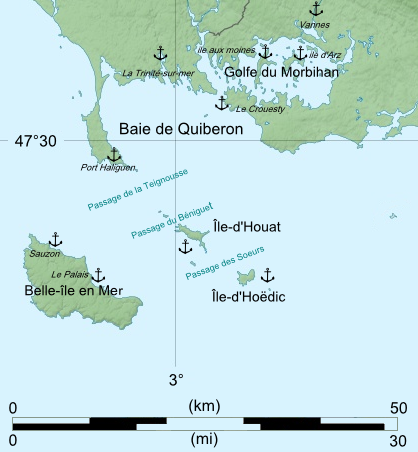 |
| The Bay of Quiberon and the Golfe du Morbihan: Tides, they have 'em. |
The problem was first "what place", and then "what time". John wanted to go in November after our boats were hauled out, and I knew I had a great deal of client work (which I could ill-afford to decline, particularly if I was going to pop for an RYA course in some distant area) in hand, plus some regular, meaning cyclical, work commitments, plus hauling two boats. Luckily, John has a more open calendar than myself, and a more probing mind when it comes to logistics. Having little response from a number of RYA "shops" here in Canada and in some places either harder to reach (southern Portugal) or less clement (mid-November on the English Channel), we fixed on Sailing School Brittany, run out of Vannes on the south coast into the Golfe du Morbihan and Quiberon Bay.
 |
| A fascinating, compact cruising ground and what I would describe as a laboratory for sail training in tidal conditions. |
John freely admits his vices mingle with his virtues as expressed by his love of fine food and wine. Add to that his fluency in French, the (relatively and conditionally) benign late-fall weather on the south side of the Brittany peninsula, the tidal and current complexity of said area, and the British-run (and yet equally Francophile) RYA-certified sailing school, and the die was cast for France.
Personally, I was working until about an hour before I hopped into the car for the airport on Nov. 8. I returned on the 17th and have been working pretty solidly since then. The evidence is the silence in this blog: if I'm posting a lot, it's either too hot or too cold to work on the boat, and I haven't got the right amount of freelance gigs. But now we are back to the question of balance: While anticipated as an order of events, this "wedge in a sailing course in the shortest possible window" will re-emerge as Not the Best Plan later in this post.
 |
| Once located after a chastening cloudburst, this was Hotel Quite Acceptable. |
But I won't foreshadow overmuch. The trip was an ordeal, as I find all air travel to be since You Know When, but it wasn't worse than I had expected and everyone was civil for a change. Upon landing in Paris, we opted to change trains to one for the largish town of Vannes in Brittany arriving three hours earlier, meaning we'd be awake and moving for 25 instead of 28 straight hours. Some hustling and rapid French exchanges later, and we were zooming in uncomfortable seating through the French countryside, which seemed remarkably untouched by fall colours, if garlanded in grey, weeping clouds and stoles of sunlight.
 |
| One of the publications I regularly work on has a distressingly similar palette to this French "W.C." |
 |
| The IDEC trimaran: Around the world, solo, in 57 days. Yikes. It looks faster than a moving boat tied to a dock. |
 |
| One of Taberly's novel...and successful...experiments, Pen Duick V, the first boat with water ballast tanks. We docked across from it. This was at Port-Haliguen, on the "presqu'île de Quiberon". |
 |
| Oh, there's a nice metal beauty!...across from Pen Duick V. |
 |
| Hmm. Nothing online about this impressive vessel, even given its unusual name of Catgil. |
 |
| Tamara at Vannes across from le Capitainerie, the rather official clubhouse for the popular Vannes marina |
Please note that apart from a brief 30-odd knot squall that kicked up very Lake Ontario-like square chop of about a metre inside the Golfe, we had very little in the way of wave action. Currents, however...
Now, as for the rationale of picking an RYA course, it can be summed up in terms of throughness, a fairly rigorous review of instructor and examiner standards (although John has found this last part a little on the variable side in the past), and the general respect given to RYA certification well beyond Europe.
I won't delve into the debate, perhaps new for some of my American readers, on the merits of yachting education and subsequent certification, except to say that I personally believe that given my informal, scattershot and non-familial (my father was in the British Merchant Navy, but personally never messed around in boats beyond enjoying an occasional row) apprenticeship to the sea, boat handling and navigation skill sets must be objectively measured against some sort of knowledge-based and experentially evaluated standard.
John and I concur that Canada does not have such a standard, save for Canadian Power Squadron course and some auxiliary instruction of what seems to me to be a touch feeble. Enough to keep one off the rocks, but insufficient for ocean-crossing. I'm not alone in this: there are RYA schools in Canada, but they were neither clement, as well-provised or as logical to attend as was the one in Brittany.
 |
| With the RYA, there are two paths: one leads to better skippering of a private yacht, and the other to more commercial ends, including chartering or smaller commercial vessel operation. |
The RYA, by contrast, has graduated courses to take in a fairly linear way from lubber to skipper well-prepared to go pretty much anywhere. Perhaps a touch ironically, the RYA courses were originally devised to keep the government out of boating, and yet have become a de facto regulatory reference in places where no such boating standards exist. It can lessen the cost of one's insurance, as well.
Now, does the average boater need RYA courses? No, not necessarily, but then, who is the average boater? A weekend fair-weather sailor could be hit by a squall stronger than any I've ever experienced (the middle 60s on Lake Ontario, the middle 40s in the Atlantic). As an analogy, automobile commuters don't need winter or defensive driving courses, either, but it's hard to argue that having such training can increase one's odds in challenging conditions.
For North Americans, ASA, CYA and various Power Squadron courses can work as sail training. If you throw in plenty of sailing in all conditions (which many sailors frankly dislike, avoid and feel challenged by, understandably), plus a bit of yacht delivery work, plus some first aid training, you would generally match the lower tiers of RYA certifications. But what would be lacking is that measuring stick whereby one's knowledge (and reaction speed and boat handling choices) are compared to a recognized standard. What would be lacking is balance.
That's what I was looking for, and, Neptune help me, that's what I found.
 |
| Port Navalo lighthouse at the entrance to the Golfe du Morbihan. This is the spout: the sea pours in and out. |
Still jet-lagged and mentally compressed (well, I was mentally compressed), Dave, John and myself left for five days aboard Tamara. Dave's Bavaria 36, which he bought out of charter, sported three cabins, which I thought was hard to do on a 36 footer, but proved quite serviceable in actual use. The general idea on this sort of course is to sail from port to port in the daytime, and to include some night passages for the purpose of taking bearings, estimating distance off and generally playing "spot the phare" against a sometimes busy background. French buoyage is generally excellent, if often unlit, and Quiberon's suitability as a cruising and as a sailing instruction zone of high relevance is based on the fact that it's full of rocks, ranges, shoals and markers for all the above. The French nautical charts are easily the match of the British ones, and Dave said he went through three sets of the local area per instructional season...even with soft "2B" pencils, the constant erasure and handling wears even the sturdy paper out.
 |
| Oh, buoy: Throw in sound and light signals and day shapes RWG light sectors and you've got a brightly coloured stew. |
Back to Sunday: After a brief but thorough safety drill from Dave, who as expected, keeps his boat in full compliance, as far as I could see, with all flares, extinguishers, lifejackets (what we call PFDs) and so on, we shoved off into a sunny going cloudy going breezy day, i.e. Brittany sailing weather. We preceded past the unfamilar-to-me IALA-A buoyage (red right leaving on lateral marks!) south into the Bay making for Port-Haliguen, where my failure to recycle my knowledge of the rarely seen (on Lake Ontario) cardinal buoys would first rear its empty head.
 |
| This was better than the one I got from the CPS 14 years ago. |
 |
| See? No grid beyond the rose, nor error offsets, nor handy scale to use with dividers. Oh, yes, there were dividers. |
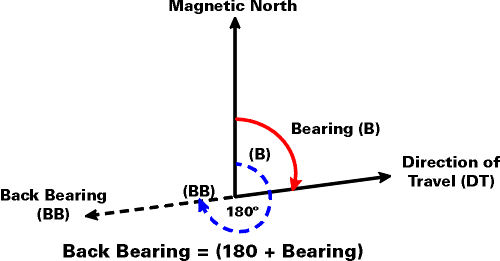 |
| If you can't see the lighthouse ten miles ahead of you, try to see the lighthouse ten miles aft. |
Now, I know and actually use this stuff in my own chartwork...I don't have a working plotter on Valiente, and that means the GPS is used (when it's used at all) to determine arrival time estimates, distance to the next waypoint, and so on. Most of my nav is still paper-based and my pilotage is done using hand-bearing compasses. In other words, I'm mostly in this headspace already. But it's markedly different in a new environment, with new numbers (the variation in Lake Ontario is considerably larger and, at circa -10 degrees, easier to manipulate without pen and pad), the effect can be a little disorientating. Or so I found.
 |
| The bible, or near enough, as it was an object of near-religious veneration and scruntiny. |
Thrown into that mix is a tidal range of about 4.5-5 metres. "Chart datum" isn't a worry so much on Lake Ontario, the depth of which is for reasons of shipping kept above it. Here the tides are, while not extreme, a big consideration, and considerable research is required. It's picky, if not overly complex, but the upshot of understanding tides is to grasp that the hours around high and low water are (usually) when the current is most slack and the current imposed on the water is at its least. Conversely, the point between the high and low tides can be (usually) the hours during which the waters are moving fastest, which in turn can help or hinder one's progress.
Note the "usually" there: In places with unusual geographical or seafloor features, or which feature some sort of restriction, there can be a predictable delay in the tidal streams, and a corresponding misalignment of the expected currents. So you could have the same tide both "with you" and "against you" in a rather short period of time and stretch of water. Welcome to Brittany!
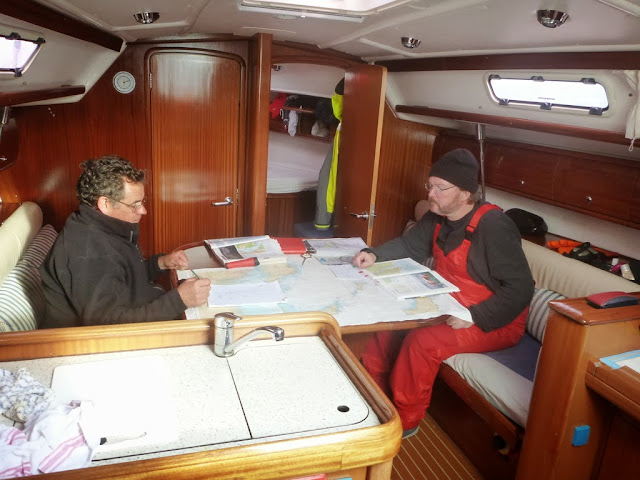 |
| Monkish postures aside, this was a fairly common scene aboard Tamara. And yes, we all require geezer glasses! (c) photo by J.C. |
Luckily, there are crib notes and techniques and almanacs to help turn this sort of voyage planning into a Big Math-light Picture. Briefly, one might determine from an almanac of tidal ranges a particular day's tides from what's called a primary port. The closest one to us was Brest, so we note the tides at Brest (there were two highs and two lows per 24 hour period), correct for local time if necessary (this is why you want a clock reading GMT/Zulu/UT or whatever you're calling it); extrapolate to the closest secondary port (a plus or minus X number of minutes plus a height offset); and then consult the tidal stream information in your (in this case) handy Bloc Marine book for your area and the time of day/tide during which you'll be sailing. It will be quite evident if you'll be helped or hindered by billions of litres of water moving around, or whether the wind will oppose the current, making for a potentially nastier trip. Factor in the current offset into your proposed course to steer (the concept of tidal current set and drift). It may appear when that number is finally determined that one's boat is crabbing at an angle to reach a selected waypoint. That's because it is.
Again, this is stuff I knew. I covered tidal concepts in my first CPS course in 1999. But I hadn't really experienced firsthand; when one leaves "with the tide" you don't really think about it at sea until you again approach the land. I find it fascinating, and doable, but I needed to refamiliarize myself with it, because it came back slower than a man paying to learn would prefer. Apologies if I've made errors in description and logic...I'm typing this out from memory, not from the books...
...I didn't have time to do more than leaf through, glancing at chapter headings.
 |
| This is the small island of Houat. It is pronounced "What". Bilingual hilarity ensues. |
 |
| More Houat, during a lunch stop. It kicked up past 20 knots during a delightful repast here, making for a good run. |
 |
| One of these is probably Hoëdic, Breton for "isolated danger mark". Note the untouristy weather. |
 |
| Note the liferaft: This "RYA Training Centre" is equipped forproper ocean travel, even if the Bay is a rather cozy corner of the Atlantic...it could get nasty quickly. |
 |
| Pretty benign for November. Temp: about 10C |
 |
| Weirdly, the Golfe resembles parts of Georgian Bay, perhaps 500 years in the future and littered avec chateaux. |
 |
| A visual cliche, to be sure, but it was followed by a proper thirty-knot line squall. I like helming in proper line squalls. |
 |
| The Bristol Cutter Cariad, the sort of working boat that would guide bigger vessels through appalling weather we didn't really see. |
 |
| No time to step aboard and explore, alas. Like Carnac, so close and yet... |
The end of the story is only a little sad. Nick the anecdote-stuffed RYA examiner came aboard and we presented elaborate (to me) passage plans to get us not only into three of the local Bay of Quiberon ports we'd already seen, but to cover a 100 NM passage involving (at a posited five knots of boat speed) various tidal and weather conditions, as of the day of the exam. After submitting these plans and after significant ex tempore talk on safety, weather, what three blinks in the fog might mean, and other nautical minutiae, and after approximately nine hours (I'm not joking) of examination, John achieved his Yachtmaster Coastal certification.
Long story short, I got into skinny water (but didn't touch, at least) on the wrong side of a green buoy the size of a Liberty Village condo and failed the exam. Fatigue and the distinct sense of my serious underpreparedness foiled my concentration, but I don't regret the attempt and feel I got plenty of value and instruction of the experience.
Now I have a better sense not only of what's involved, but where my weak spots are (I HAVE to get out on deck more and let the missus drive...which she has resisted, but should not). I found the quality of Dave the 'prepper' and Nick the examiner to be exemplary, and would encourage anyone wishing to try for this sort of certification to consider choosing Sailing School Brittany for top-flight instruction on a well-found vessel.
While I let myself down a bit (and part of that arose from a very compressed work schedule in the run-up), I cannot in any sense fault either the coursework or the instructors' delivery of it. Well, maybe a bit more weather theory might be an idea, but that's a very small cavil. I've received no price break or footrubs for the above sincere endorsement; I really believe it was full value for the price and a real-world chance to review the holes in my seamanship canvas, so to speak.
 |
| That's the new Jeanneau Sun Fast 3600 rafted up to Tamara in Vannes. France showed us an unbelievable volume of boats, several of the "super hot" variety. Also of note are the greater number of fenders called for when tidal current is about and who knows how many boats may raft onto one's boat. |
It's all a matter of achieving the right balance.

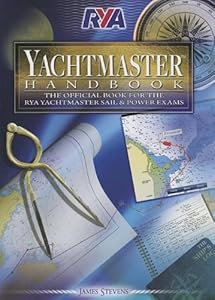
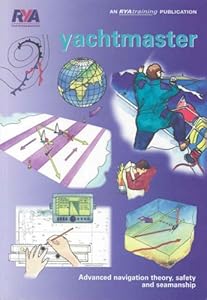







7 comments:
A fascinating story, very well told, Rhys. Bravo!
Thanks, John. I had a great time.
Welcome back. Nice trip.
Thanks, Ken. I learned a lot, and also learned about what I've yet to learn. Funny how that works.
Great trip, experience (as in adventure) and a good read.
I feel compelled to spill the beans on boating courses. I have taken all 4 courses leading to my Ocean Skipper's licence that occupied me for hundreds of hours and cost muchos euros. I learned to use the sextant, I could rattle on about currents, drift, deviation, declination, use radar the old-fashioned way...bla, bla, bla.
Notice I used the past tense. The only thing I know today is what I use in real life sailing, important stuff like using one jackline running along the middle of the boat and testing it to make sure I'll never fall overboard...and, yes, keeping a regulations book at hand to confirm what all those red and white lights on a dark night actually mean.
Essential knowledge, common sense and experience will take you there.
Thanks, Horatio. It's different for North Americans. While in Canada one needs a minimal certification to handle anything bigger than a canoe or a three-metre dinghy, there are no licensing requirements whatsoever in many parts of the States. So we do not have the culture of "qualification" here as is the case in Europe, and particularly in Portugal, where I understand the Navy acts as a coast guard and has quite high standards for recreational sailors.
Whether these skills (yes, I can do celestial navigation!) prove useful or not, I think they lay down for the small-boat sailor a foundation of competence, and give guidance to decision-making based on history (the people who sailed safely and correctly returned to become teachers, after all...) and not instinct and impulse, which, while helpful, should not be the first place to get answers on how to solve a "situation" at sea.
So this course for me showed me what I know, and what I seem to have forgotten. I need to sail more in the run-up to sailing full-time, it seems.
Post a Comment